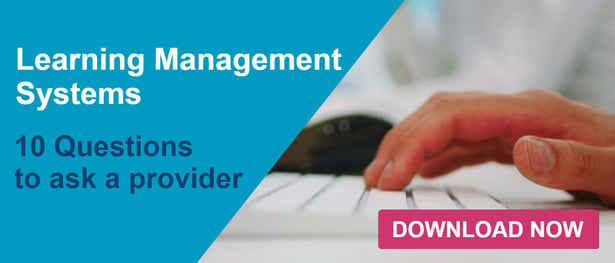.jpg?width=614&height=220&name=G20-james-mckinven-426304%20(2).jpg) Dr Toby Thompson recently wrote a blog “Points mean prizes” which piqued a lot of peoples’ interest.
Dr Toby Thompson recently wrote a blog “Points mean prizes” which piqued a lot of peoples’ interest.
Following on from that we would like to share answers to some of the most frequently asked questions we receive about linking gamification to learning.
What is the difference between a gamified Learning Management System (LMS) and a portal?
Portals, which are frequently used to support executive development programmes, are great for acting as repositories of documents for participants to download and read at their leisure. They can also hold joining information, videos from course sponsors. Participants and clients can upload documents too for other people to read. But essentially portals are very two dimensional; information is viewed and mentally-processed. For collaborative, lateral communication, external email is still required.
An LMS is different in that it is easy to create opportunities for interaction and communication between people. That might be between participants and tutors, between participants and client sponsors, and participants interacting with each other.
The interactive functionality also means that communications can be completely contained inside the LMS environment. This makes it much easier to preserve confidentiality of communications if that is necessary. The “One-Stop-Shop” nature of the LMS means that people are more likely to use it. It is human nature – if something has everything in one place, and it is easy to find what you need, people are more likely to use it. Isn’t this the same principle that made a success out of department stores, supermarkets, and most recently sites like Amazon?
Will people feel patronised by gamification?
Whilst people may not necessarily be keen on gaming, research into behaviour and learning has shown conclusively that behaviours are driven by 3 things; motivation, ability and a trigger. And gamification has been shown to provide the basic human needs of Reward, Status, Achievement, Self-expression and competition – all of which create motivation. Our LMS system is designed to ensure that everyone regardless of initial ability is able to improve, and triggers for action.
One of our own colleagues loathes electronic games and was very sceptical about the gamification concept, yet the very first time he used the LMS to work through a couple of introductory modules he changed his tune. He told us: “I looked at the summary once I had finished and realised that it was only 90% complete, and that one of my colleagues who had done exactly the same modules as myself was higher on the leaderboard. The first thought in my head was “How can that have happened? How do I get 100%? And what can I do to catch up to the other guy?”, and the second thought in my head was “Oh right, NOW I know what the Networked Learning guys mean about gamification driving learning!” - I’d been hooked.”
Will people feel like ‘Big Brother’ is watching?
The LMS allows the programme sponsor to easily track progress and levels of engagement, and award badges to individuals for particular activities. For example a sponsor may want to award a badge to someone who has been particularly active in using the LMS to share articles with their colleagues. We did wonder how the LMS would be experienced by participants from cultures where the involvement of higher authorities in personal activity and information is perceived very differently to the UK. Yet the hugely enthusiastic involvement from recent participants from Russia and the Middle East quashed that concern.
My own Doctorate in Education (EdD) research showed that there was no significant difference in levels of usage between men and women. It is universally engaging.
Will people know how to use it?
User-friendliness is always subjective, but we deliberately designed our LMS so that it can be accessed from a multitude of devices including mobiles. We know that some people like structure, so we created a system that shows people where to start their learning, and then guides through it. We also know that some people like to be flexible, so we also designed it so that every section can be accessed from every other section, so people can choose their own journey through the learning if they wish to. We also created a video-driven piece of e-learning that shows people how to use the LMS when they first start.
As a client, how I can ensure the LMS is going to give me what I need?
We know that clients want an LMS that will give them a return on their investment, i.e. an LMS that participants engage with, and as a result of engaging with it, learn things that can be applied within the organisation. If you are thinking about talking to an organisation about creating an LMS for you, here are our top ten tips for things to think about before you have that first meeting:
And if you would like to talk to us about how a Learning Management System can improve your return on investment in Executive Development, contact us.


.jpg)

